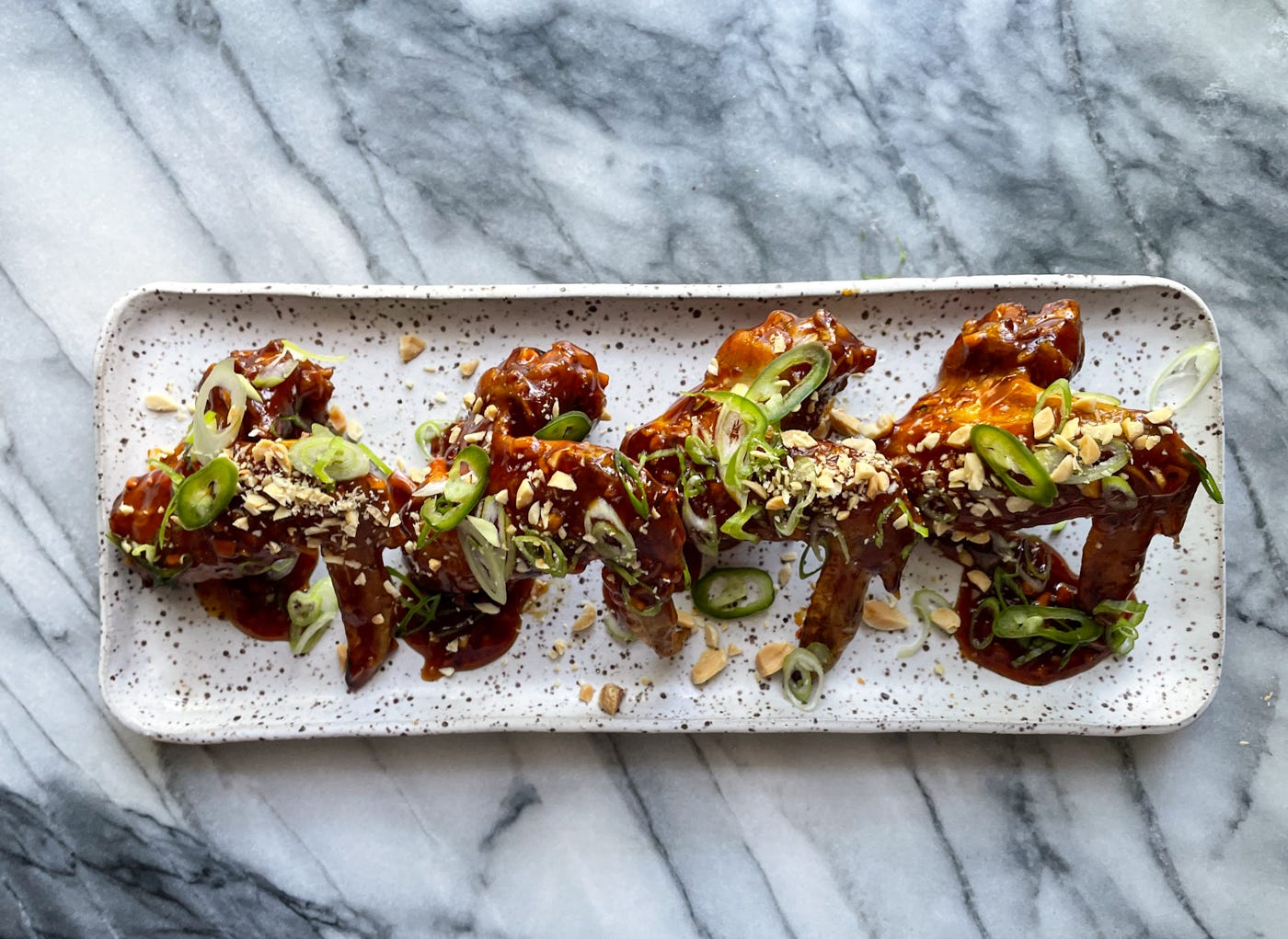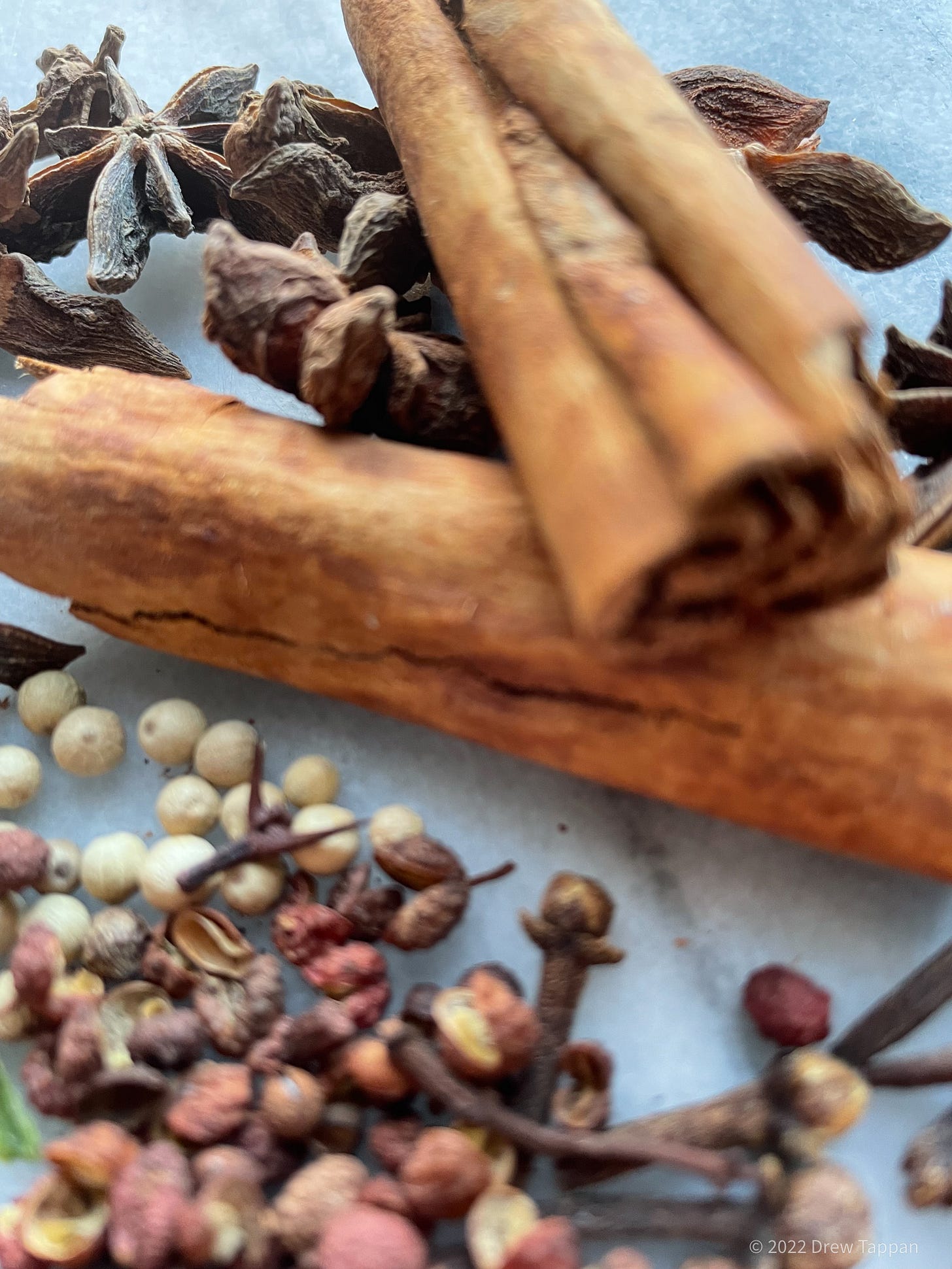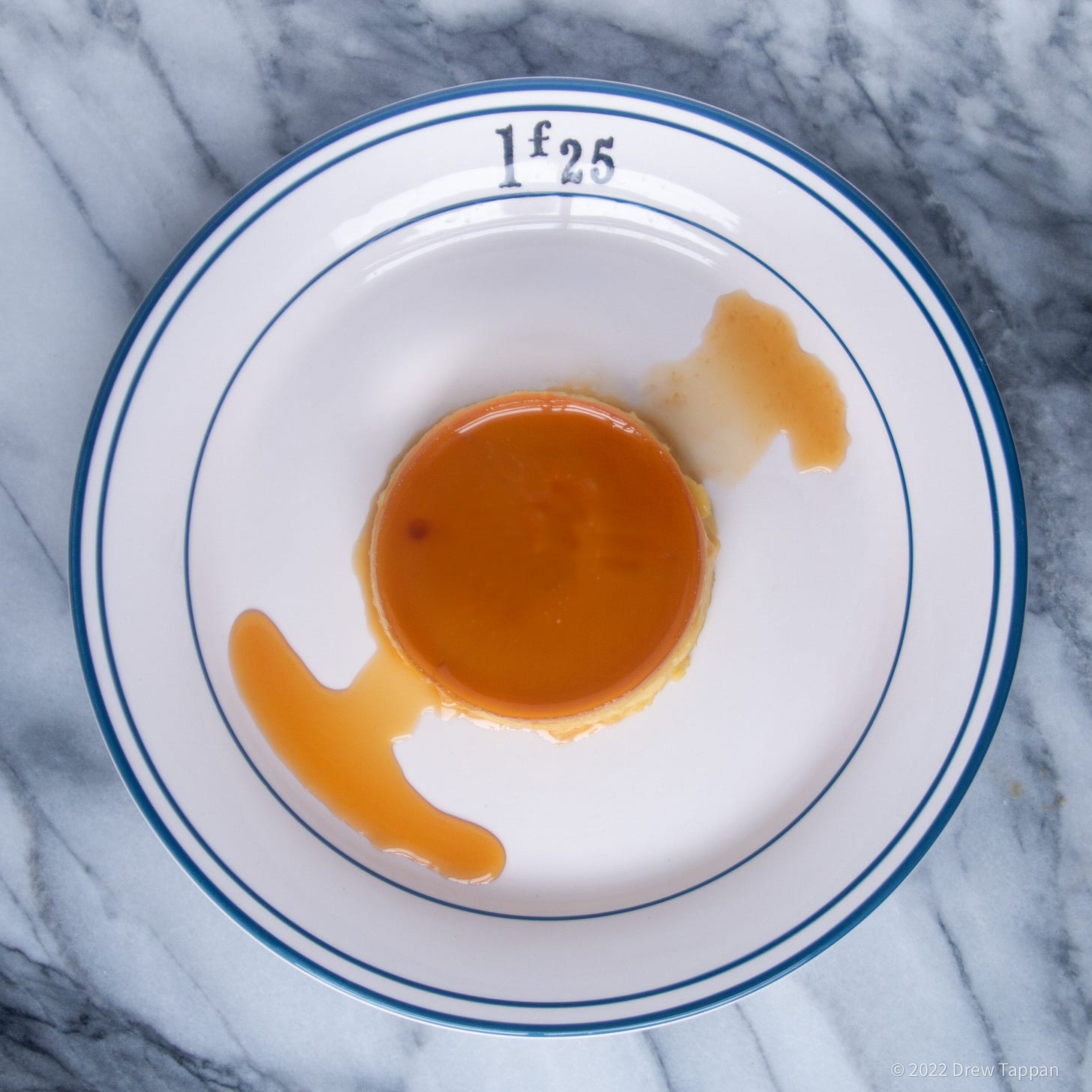A Week Late and a Menu Short.
Something a little different this week.
This newsletter is late because I forgot that it was Tuesday. I mean, last week I forgot it was Tuesday. Because that Tuesday was the tuesday after a Monday holiday and I thought it was Monday instead of tuesday - like second Monday. So when I sat down to finish this, it was already wednesday because I’d forgotten that Tuesday was Tuesday and that what I thought was Tuesday was actually Wednesday and by the time my holiday addled brain worked it all out I thought “oh, whatever. I’ll just get it out a day or so late.”
Given the way last week was going what with not really knowing what day it was, you can already tell that was gonna be a stretch. So here I am a full week late. I’m telling myself that that’s because I planned to take a week off. I did - sort of – but I also planned to get this edition out
I’m also late because I had also intended to share a menu I’ve been developing over the past few weeks that utilized some flavors from various Asian cuisines … but, of course, I did that with a menu now two week ago. I mean, not that specific menu, but some of the same flavors. I didn’t want to seem like I’m in a rut (especially not a rut that I might actually be in) so instead of sharing that menu today I’m going to do something a little different.
This week’s menu isn’t a menu – at least not in the way I traditionally do one. There’s not a first course or a salad, or even a main or a dessert. In fact, nothing that I’ll talk about today is really a dish by itself.
I’m going to talk about ingredients. Specifically, about a few things I always (and by always, I mean always except when I’m out of it and have forgotten to pick it up during three or four successive trips to the store out of totally-normal-not-at-all-losing-my-mind-forgetfulness and because I was distracted by the bag of jellybeans or something but otherwise always) have in the fridge, pantry, cellar, or … honestly the yard.
I’m also going to talk about a couple of tricks techniques I fall back on over and over… The more you cook, the more you develop your own style, your own little signatures, foibles, or flourishes that you intentionally or inadvertently use again and again.
Fish Sauce
I’ve said this before. Sometime fish sauces – whether one that originates in south east or east Asian cuisine, or Italian Colatura or even Worcestershire sauce (It’s made with anchovies. Really.) can seem like a kid’s gross-out joke. The process of making them – while varying slightly depending on recipe and tradition) basically involves fermenting small fish or shellfish in salt, and then … well using the juice that results as a condiment.
Fish sauces add umami - the so-called fifth taste (after sweet, sour, bitter, and salty) – to dishes and in my cooking, I don’t limit their use to dishes where they’d traditionally be used.
Put a little Thai or Vietnamese fish sauce in your Bolognese or in a chicken marinade. Add Worcestershire sauce to beef stew or onion soup. They’ll add a roundness and depth of flavor that really improves savory dishes.
OR switch them up – try using an Asian fish sauce in place of Worcestershire in a BBQ sauce … it work particularly well with pork.
And of course, there are the more traditional uses as well. I’m particularly partial to Fish Sauce Caramel – like the one I used for those Fish Sauce Caramel Chicken Wings in a menu almost a year ago that are in the pic at the top of this section.
Five Spice Powder
If you’re a regular reader, you already know about my obsession with this spice blend. I use it liberally, and like the fish sauce mentioned above, I use it liberally in places you wouldn’t expect it. It adds warms and complexity to a lot of dishes - and I use it in place of baking spices in everything from classic forcemeats like Pate de Campagna and Chicken Liver Patè to using heaps of it in a funky take on the French spice cake Pain d’Espice.
You can find it blended at most groceries these days, but try different blends as many are subtly or not so subtly different. You can also make your own from whole or ground spices - there are many different recipes available on the internet. I’d happily share my recipe with all of you - if it didn’t sort of change every time.
Kosher Salt
You might notice that I almost always specify Kosher Salt in my recipes. That’s for two reasons. First, it generally doesn’t iodine. Most table salt in the U.S. has iodine added. That’s fine, it’s a necessary nutrient. It helps prevent goiters and other diseases and adding it to salt really was a miracle of public health policy. But it does have a flavor, and especially when using salt as more than just a seasoning – in applications such as brining meats, or fermenting vegetables – I don’t want the iodine messing with the delicate dance of salt, bacteria, and time.
Secondly, it’s just easier to use. Kosher salts are generally sold in medium flakes – instead of the tiny almost powdery cubes you’ll see in table salt, or the vast variety of textures you’ll see in traditionally harvested sea salts. That means that it’s easy to use a pinch – and know how much salt you’re actually getting. That being said, different brands have slightly different textures and crystal shapes and sizes – so I strongly recommend choosing one brand and sticking with it. These days, that can be easier said than done. For years, I used mostly Diamond Crystal Kosher Salt. I liked the texture. Then COVID time supply chain issues meant I couldn’t find it. I switched to Morton Kosher Salt. It was fine – but the texture was just different enough it took me a few weeks of over or under seasoning things to get the balance right.
There are of course, health concerns about salt in our diets, but when it comes to flavor (and texture). more is almost always better than less. For example, this cured salmon uses a lot of salt – and I do mean a whole lot – to preserve the fish and change the texture to that wonderful, dense mouthful you expect from cured fish. Without the salt – or with just common table salt, it wouldn’t be the same.
Fresh Thyme
Dried thyme and fresh thyme are almost two entirely different things. Dried thyme, even good quality dried leaves from a reputable producer, has a muted musty earthy aroma and flavor that … well, I’ll be honest. I mostly don’t like it on anything but roast meats.
Fresh thyme on the other hand is bright and flavorful and colorful and … sort of a pain in the butt. It’s a pain in the butt because if you’re being super fancy about it, as one would if they were cooking in a super fancy restaurant or wanted to impress their dinner party guests or readers by acting like they were, you’ll spend a good amount of thyme picking time. See what I did there? I’m hilarious. At least my dog thinks I’m hilarious. Also, I don’t have a dog. Anyway, using fresh thyme often means removing the leaves from the stems because in the end, even if it’s bright and delicious and colorful, no one really wants a mouthful of twigs. There are some tricks to make it easier – including pulling the stems through a not-so-fine metal strainer – leaving mostly just the leaves in the basket – but my favorite trick is this.
Don’t care. Just cut it up really finely or leave it whole. After all, this isn’t a super fancy restaurant, and my dinner party guests are mostly excited about the free food.
Burnt Sugar
I’ve leaned on burnt sugar a lot over the years – both n writing this newsletter, and in cooking in general. First of all, there are the caramels – sugar carefully taken just to the edge of burnt, allowing the flavors of slightly toasted sugar to become… well, caramelly and delicious. And there’s the fish sauce caramel I mentioned above, usually utilizing a darker caramel than those used in desserts. But there are other uses as well. Some for flavors, and some almost totally for appearance.
Unhappy with a pale stock or sauce?
Burnt sugar to the rescue.
Want a lovely deeply roasted look on your thanksgiving turkey?
Yeah. Brush it with burnt sugar and water.
I often make a batch of what is essentially caramel coloring – like you see as an ingredient in a lot of prepared foods and beverages – by slowly pushing sugar in a dry pan until just before that point where it will actually smoke and char the pan. Then I add water, cook until the dark mess is dissolved, and reduce it until it’s very strong. A few drops added to a sauce will deepen the color.
On the other end of it, I’ve found staring some sweeter sauces with a dark caramel – as opposed to say, using brown sugar, is a fun change of pace. A BBQ sauce built on a dark caramel feels rounder, and doesn’t have the sulfuric smell or taste that molasses can add.
Onion Puree
I’ve sort of become obsessed with this technique over the past few months. Take an onion or two. Even three if you want, or it they’re small onions. Peel ‘em, trim ‘em, cut ‘em, into big chunks and toss them into the blender or food processor and just purée the crap out of them. I mean processes them until they’re as smooth as you can get.
Then start cooking.
Honestly, my obsession with this started while trying to develop a recipe for my other project, The Chicken Thigh Guy. Specifically, a recipe for Doro Wat – a phenomenally delicious and lusciously spicy Ethiopian chicken dish that often starts with extremely finely chopped, minced, or pureed onions. As that base cooks down, it loses that onion pungency, sweetens, and (I assume as pectin from the layer structures breaks down – but I’m very much not a food chemist) thickens. The resulting texture smooth and soft and has an absolutely luscious mouth feel without adding starch or other thickeners that might mute or affect flavor.
Since then, I’ve played around with using onion puree in dishes ranging from a simple spaghetti sauce to long, slow cooked beef stew. In most places it’s really a phenomenal addition but it has one really big drawback.
Time. As in the clock, not thyme as in the herb that I rambled on about earlier in this edition. Using onion puree as a base takes time. To change it from an eye wateringly harsh paste of acrid allium into that sweet, soft, flavorful addition you’ll have to cook it for a long time, and at a low temperature. Everyone knows that burnt onions can ruin a dish, and that’s true here as well.
The good thing is, that unlike that Doro Wat recipe, you don’t always have to cook the onions down first. Making a stew or sauce? Just add the onion puree at the same stage as most of the other liquids. Just don’t try it with anything that cooks for fewer than about three hours.
That’s it for this last week’s weird not actually a weekly menu menu. I’ll be back next week with a more normal edition. Probably. Unless there’s an extra Monday in that week and then, well, no promises.









Thanks Drew. Your pen is as good as your cook'in.